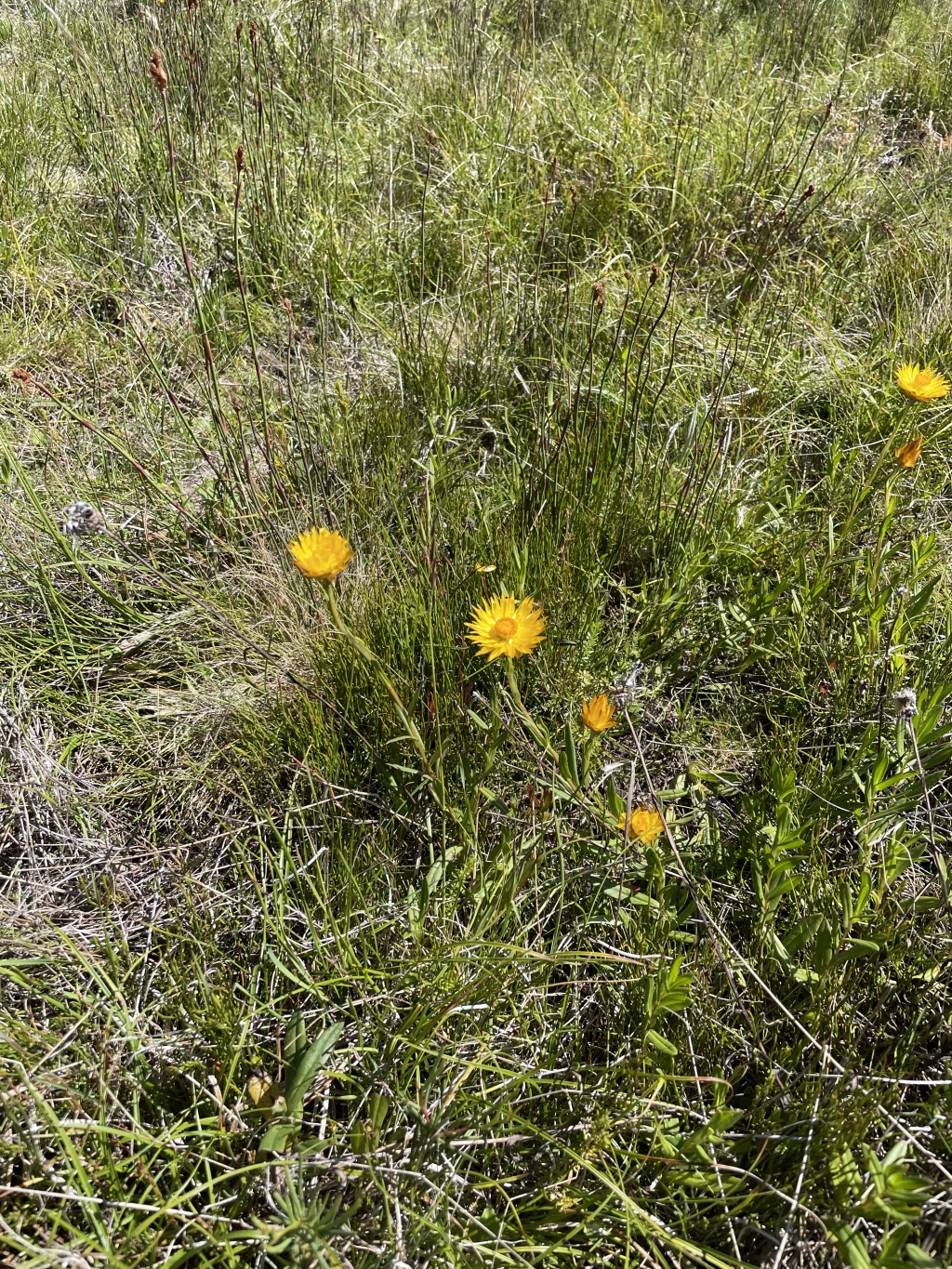Xerochrysum andrewiae
T.L.Collins & J.J.BruhlPerennial, rhizomatous herb, 30–80 cm high; stems simple (rarely 1–few-branched), erect, with arachnoid hairs confined to upper 5–15 cm, otherwise glabrescent. Leaves narrow-oblanceolate to narrow-lanceolate or oblanceolate to oblong, 2–6 cm long, 2–10 mm wide, upper surface with sessile glands, usually with scattered arachnoid and/or hispid hairs; apex acute. Capitula solitary, terminal, 2.5–4.5 cm diam.; involucral bracts ovate or lanceolate, 1–2 cm long, yellow to gold (outer often brown), minutely scabrous on abaxial surface, apex acute; florets yellow, female florets in a single outer series. Cypselas c. 2.5 mm long; pappus yellow, 5–8 mm long. Flowers Nov.–Mar.
EGU, MonT, VAlp. Also NSW, Tas. In Victoria restricted to subalpine and montane swamps in the east of the state (e.g. Nunniong, Cobberas, Rodger River, Delegate River).
Plants resemble X. palustre in general habit and habitat preference, but differ from that species in the outer bracts being scabridulous on the abaxial surface (c.f. smooth). Often occurs in close proximity with X. subundulatum, which occurs in areas adjacent to wetlands. Xerochrysum andrewiae may be distinguished from that species in the relatively narrower cauline leaves that have sessile glands on the upper surface (c.f. stipitate glands), more slender, lanky habit with lower portion of stems becoming glabrescent and lower leaves not persistent.
 Spinning
Spinning